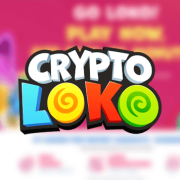It’s no exaggeration to say that social media is its language. From abbreviations to emojis to an array of various metrics, numerous terms are easily misunderstood even by the most proficient user of social networks. Today, we’ll explore one of the primary sources of confusion for many users: the difference between reach and. impressions, along with how those metrics affect how people interact on Facebook.
The terms mentioned above are often used when talking about social analytics. They are vital in forming an understanding of the way your Facebook page is doing. To clear any confusion related to these terms, we’ll begin by defining each of them before revealing the way they relate to each about why they are essential to reporting on the performance of your Facebook page. So let’s begin!
Impressions
Impressions refer to the number of times an update from your page is shown. For instance, if a person notices an update on your page on their Facebook newsfeed and then comes across the same update when they share it with a friend, it would count as two impressions click here.
Reach
Reach is the number of people who have received an impression of the Page post. If we go back to the earlier instance, there was only 1 “reach” recorded for that post, even though it was viewed twice by the same individual. This is because it was just one person who had seen it.
Although this is the most fundamental concept of “reach,” there are all three different categories that a person can fall under on Facebook.
Organic Reach:
This is the number of people who have seen an article for free or without advertisement dollars on their newsfeeds after it was posted via your website.
Paid Reach:
The number of viewers who came across your post due to an advertisement. Pay-per-click is affected by the amount of money you spend on advertising; therefore, the more you spend, the more people will view that article or ad.
Viral Reach:
Many people have seen your post because an additional Facebook fan likes it, responding by commenting, liking, or sharing the content. It could be a result of organic posts and paid posts.
Once we better understand the distinction between impressions and reach, we can begin to explore engagement!
Engagement and Engagement Rate
“engagement” on Facebook is when people take action with your content. It is possible for them to like the post, click an image, or comment on an image. The number that is reported on Facebook for engagement can be the number of clicks, likes, shares, and comments made on the post.
The engagement rate refers to the percentage of people who have engaged with the post on Facebook through responding, liking, commenting on, clicking, or sharing the page. It is divided by the number of people reached. For instance, if you had ten people like the post and it was shared with 100 people, your engagement percentage would be 10 percent. Average engagement rates in our industry are close to 2 percent.
Why Should I Care About Engagement?
Engagement with your posts from the past is a significant factor in determining who will be able to view your posts. Engagement is an essential factor within Facebook’s Edge Rank algorithm that determines the people who can view your posts which is how much reach you expect. The algorithm’s purpose is to enhance user experience and consider whether the user has been engaged by your posts before deciding to whom to show your content. Engaging posts should form the primary purpose of all your Facebook posts. The more often your posts are loved, commented on, or shared and shared, the more unique people you can get in touch with!
The interaction between reach and engagement is dependent. Reach is the key to building meetings; you need great attention to maintain your reach. This means that you should concentrate on producing high-quality content designed to engage with customers while considering new ways to gain new Facebook users to boost your reach.
For suggestions on creating quality content and expanding your Facebook reach, read these Dealer Content Ideas for Sellers to begin making notes!
Also Read: https://casinobolds.co.uk/















Comments